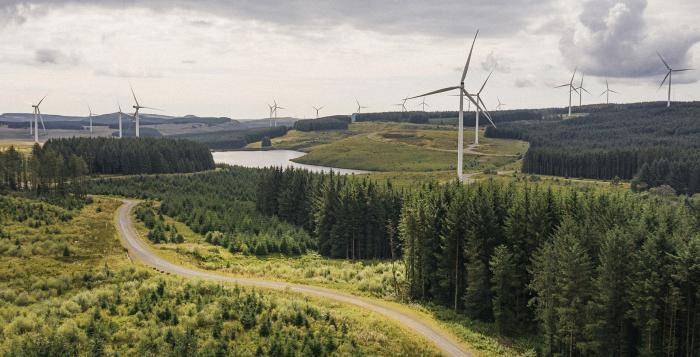Stability Market Design
The Stability Market Design project, a Network Innovation Allowance (NIA) funded innovation project, considered current GB stability arrangements and investigated the best option for an end-to-end stability market design. This has allowed NESO to start to develop a potential stability market and best optimise long term and short-term stability procurement.
Both Stability Market Design Phase 1 and Phase 2 have now concluded. Our key findings can be found below under Stability Market Design > Phase 2 > Project Outputs.
Traditionally, synchronous generation has provided stability requirements (inertia, Short Circuit Level & reactive power support) as a natural by-product. As more non-synchronous generation enters the system, NESO needs alternative sources of stability.
The Stability pathfinders allowed us to test procurement approaches for long term stability requirements, but NESO still relies on the dispatch of synchronous generation in the Balancing Mechanism to ensure stability. Whilst our current arrangements ensure security, they are narrow in their facilitation of provider types.
The development of a stability market could offer NESO a route to access stability services through an open, transparent, and competitive market.
Project approach
This project was a desk-based study run by NESO, AFRY and wider stakeholders.
The project:
- Set the scene to understand the future world and define the objectives to evaluate different market design options.
- Developed an enduring solution ensuring that participants can optimise their asset.
- Assessed the different market design options across the long- and short-term timescale; benchmarked against an assessment criterion of facilitating efficient dispatch, investment and provide value for money.
- Provided a recommendation of the NESO’s future stability procurement routes.
Stakeholders were able to input in this project through various workshops and questionnaires. Engagement took place at different stages of this project to gather feedback on the different options, the assessment, etc. More information on these sessions, including slides and minutes, can be found below.
More information on the stability market design NIA innovation project
Project Timeline
Phase 1
We have concluded Phase 1 of the Stability Market Design project; our conclusions can be found below.
Phase 1 of the Stability Market Design innovation project explored a potential enduring market design for the procurement of stability services with a critical focus on value for GB consumers.
We kicked-off the Stability Market Design innovation project in September 2021 in partnership with consultants AFRY. Through this study-based innovation project, we explored a potential enduring market design for the procurement of stability services.
The core recommendation of the Stability Market Design Phase 1 was to investigate the combination of a dedicated short-term market (day-ahead) with a long-term market (building on the well-functioning pathfinder approach) for stability services, while retaining the BM option as a backstop.
In the analysis, the status quo (including stability pathfinders 1, 2 and 3) was compared to the recommended approach of a long- and a dedicated short-term market. The assessment indicated the recommended approach will reduce re-dispatching costs (by ~£30m in 2026 and ~£58m in 2030, Two Degrees scenario) and emissions (by ~0.4mtCO2 in 2026 and ~0.3mtCO2 in 2030).
- ESO Thought Piece - Stability Market Design innovation project
- Report - Stability Market Design innovation project
- Annex 1 Scene setting and objectives - Stability Market Design innovation project
- Annex 2 Design options - Stability Market Design innovation project
- Annex 3 Modelling - Stability Market Design innovation project
- Annex 4 Preferred option - Stability Market Design innovation project
First webinar
Our first Stability Market Design innovation project webinar presents the situation, context, and rationale for change as well as discussing aspects of a potential stability market using building blocks approach.
Second webinar
Our second and final Stability Market Design innovation project webinar shows how the ESO and AFRY used input from our previous survey into our overall assessment of options.
Phase 2
Stability Market Design Phase 2 concluded in July 2023. Key outputs from the project and information on various engagement events undertaken throughout the course of our work can be found below under Project Outputs.
Stability Market Design Phase 2 built on the recommendations from Phase 1; the procurement of stability services through a combination of short and long-term markets.
Phase 2 consisted of three Work Packages:
- Work Package 1 - Eligibility: This is framed around questions such as the role of the TO, the participation within the long-term and short-term markets, and the debate on global vs selective eligibility.
- Work Package 2 - Contract Structure: This focusses on questions such as the length of long-term market contracts, the contract resolution for the short-term market, and the means of contract extensions.
- Work Package 3 - Procurement Strategy: This addresses questions on the stacking rules for stability contracts, the arrangements which could be employed to mitigate market power within short-term markets, and the role, if any, for a price cap backstop.
Stability Market Design Phase 2 concluded in July 2023. More information can be found below to summarise the findings of the innovation project.
To be kept updated of any further developments, please sign up to Future of Balancing Services mailing list or contact our stability team at [email protected].
We have regularly engaged with industry representatives throughout the Stability Market Design Phase 2 project. Our two key mediums were the Stability Market Design Expert Group and end of project industry webinar.
Stability Market Design Expert Group:
The ESO published an Expression of Interest seeking to form a group of industry experts with the experience of providing stability services. In doing so, we worked with a range of experts to provide feedback on the progress of this project. Their input helped AFRY to form their recommendations and to frame the decisions that we are taking forward into enduring stability market implementation.
The minutes and slides of these events are available below.
Stability Market Expert Group 1 - 20/09/2022:
Stability Market Expert Group 2 - 09/01/2023:
Stability Market Expert Group 3 - 14/03/2023:
End of Project Industry Webinar - 17/07/2023:
We have now concluded the Stability Market Design NIA project and held an end of project webinar on Monday 17th July 2023. This was open to all industry stakeholders.
A link to the slides which were presented and the webinar recording are published on this webpage.
In addition, a more detailed set of material outlining the key options which were assessed for each exam question, and how the recommendations were made, is published on this webpage under the Project Outputs section.
Discover more
Contact us
Contact us if you have a question, want to share some insight or have feedback.
NOA pathfinders
The NOA Stability Pathfinder looks for the most cost-effective way to address stability issues in the electricity system created by the decline in transmission connected synchronous generation.
Check out our Reactive Power services
More information on Obligatory Reactive Power Services (ORPS) and our Future of reactive power.



